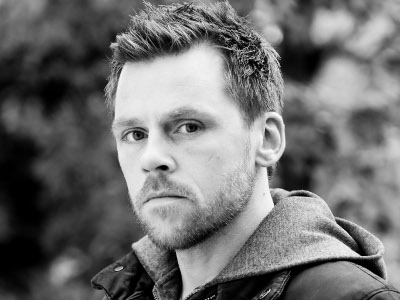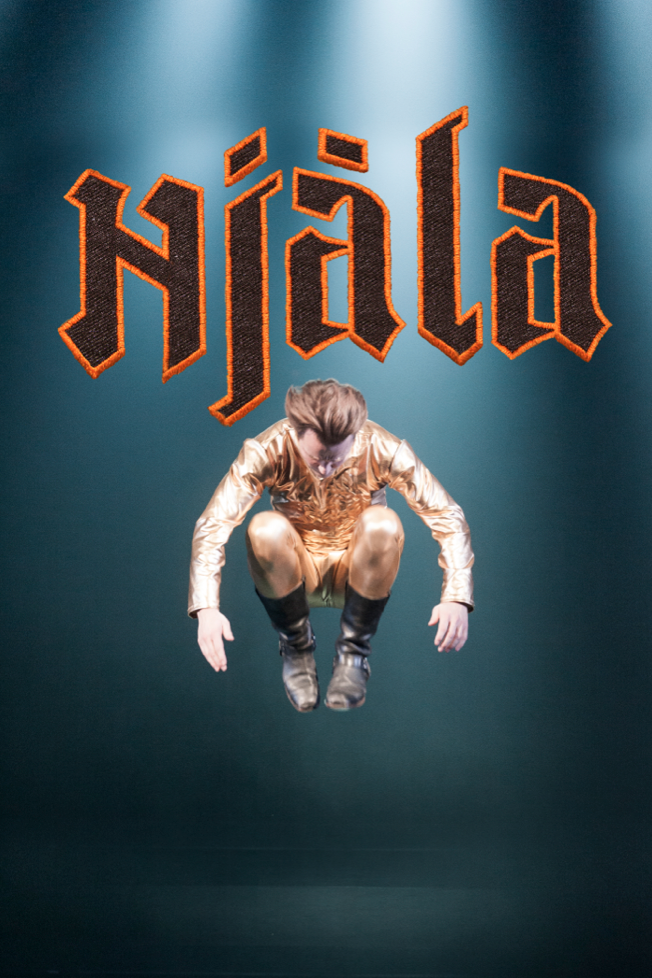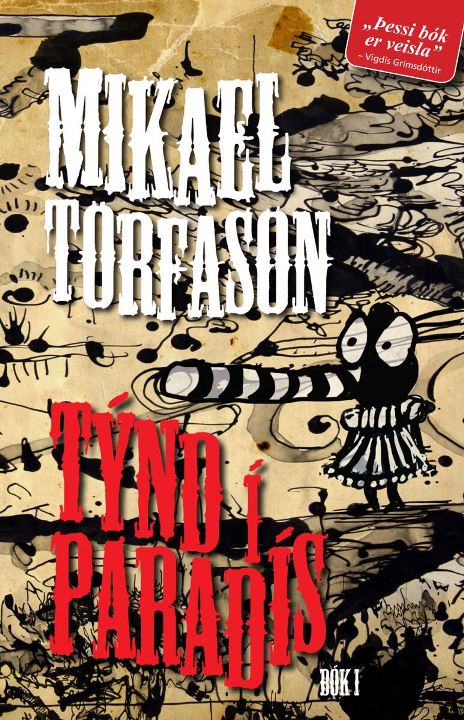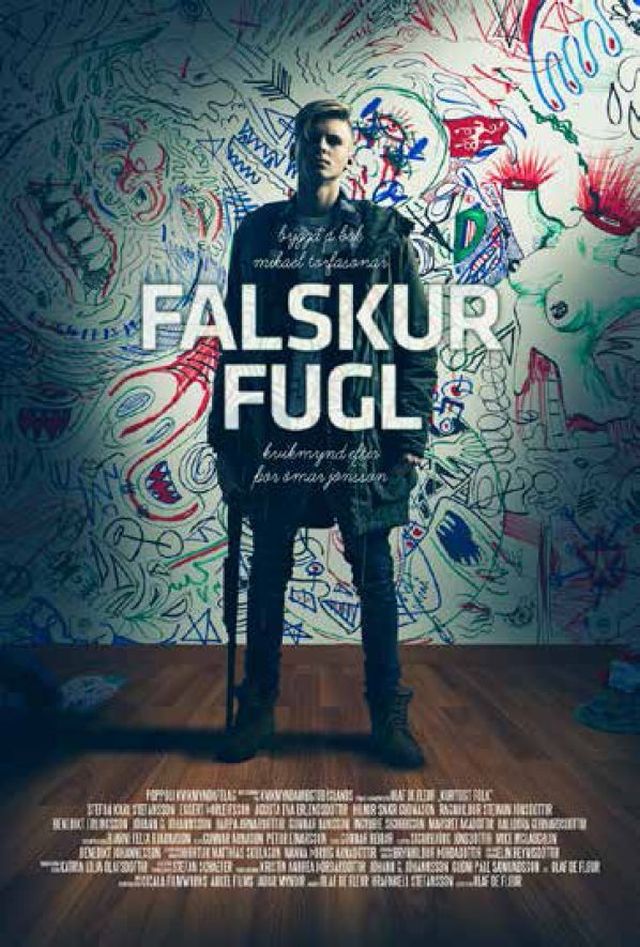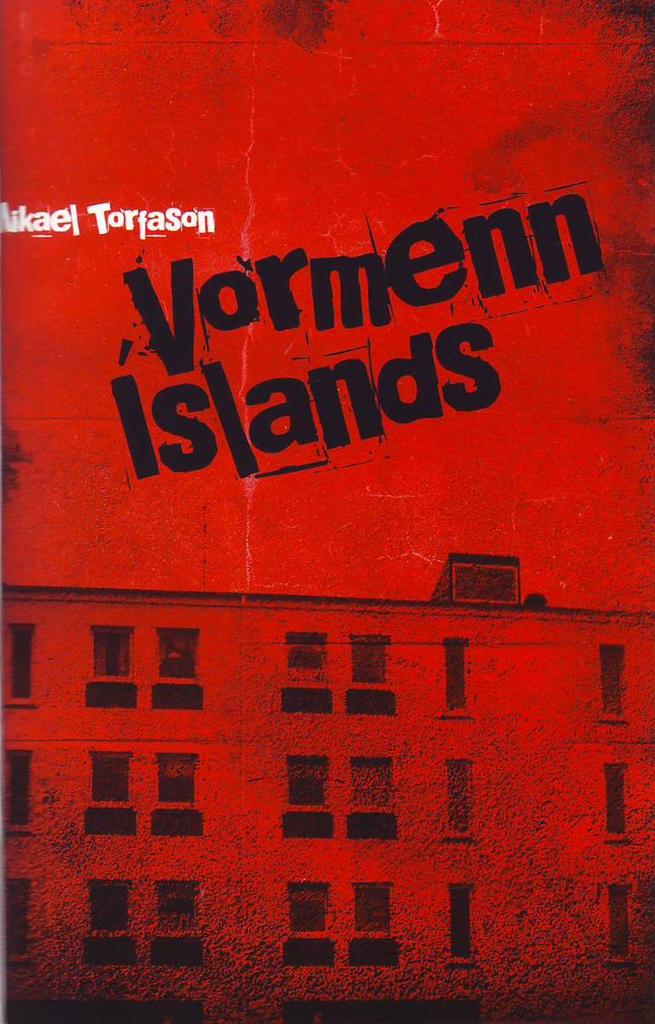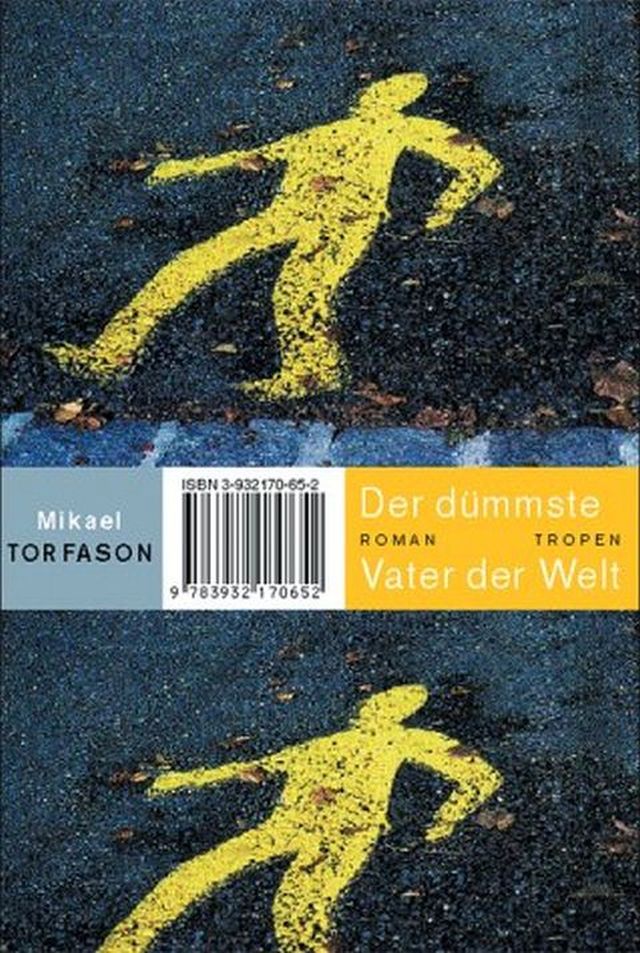Bio
Mikael Torfason was born on August 8, 1974 in Reykjavík. He grew up in the capital, moving frequently between neighbourhoods, and often stayed in the country for the summer. He completed primary school in 1989 and took night classes at Hamrahlíð Highschool and studied through distance learning at the Akureyri School of Trade in 1995-1997. In addition to this Mikael has attended many courses on manuscripting hosted by The Icelandic Film fund, Nordisk Film og TV Fond, and European Script Fund. He has been a producer of programs for radio and television and has worked as an editor for many years. He was editor of Fókus, a supplement to the newspaper DV, in 1998-2000; editor of DV in 2003-6; executive editor of Birtingur magazine publishing in 2006-7; editor of the newspaper Fréttatíminn in 2012 and executive editor of 365 media in 2013-14.
Mikael’s first novel, Falskur fugl (A Fake Bird), was published in 1997 and garnered considerable notice. He has published four novels since, most recently Vormenn Íslands (Made in Iceland, 2009). In 2015 he published Týnd í paradís (Lost in Paradise), a memoir and family history. He has also written screenplays and directed his own screenplay Gemsar (Made in Iceland, 2002). His novel Heimsins heimskasti pabbi (The World’s Dumbest Dad) has been published in Finland, Denmark and Germany, and was nominated for the Nordic Council’s Literature Prize in 2002. Mikael’s novel Samúel (Samuel), published in 2002, was nominated for the Icelandic Literature Prize. A monologue by Mikael, Hinn fullkomni maður (The Perfect Man), was staged at the Reykjavík City Theatre in 2002. He has written more for the stage since, most recently a stage adaptation of The Saga of Burnt Njáll.
Mikael's website, mikaeltorfason.com.
Publisher: JPV.
About the Author
Modern Alienation. On the works of Mikael Torfason
In the past few years, popular fiction and thrillers have finally been gaining some respect in this country, with the works of authors like Árni Þórarinsson, Arnaldur Indriðason and Stella Blómkvist. This literary genre has a fairly long history. Edgar Allan Poe (1809-1849) is considered the father of the detective novel. In fact, thrillers have been written in Icelandic throughout the twentieth century, yet they were not granted much respect.. This literary form has nonetheless been very popular. Later in the history of the genre here and elsewhere, there has been an emergence of authors who fuse popular fiction with other literary forms. The author Paul Auster does not just write popular fiction; he makes use of the detective genre in his New York Trilogy, which consists of the novels City of Glass, 1985; Ghosts, 1986; and The Locked Room, 1986 all of which have been translated into Icelandic and published by the publishing company Bjartur.
Mikael Torfason’s first novel, Falskur Fugl (A False Bird, 1997) has all the characteristics of a thriller. Its protagonist is Arnaldur, a 16 year old drug dealer who becomes increasingly violent in the course of the story. He beats people up, attempts murder, and finally succeeds at it. At the end of the story he has been jailed. In popular fiction and mainstream films, such characters are quite common. We either follow their actions from their point of view or that of those who are trying to track them down. In Falskur Fugl the point of view is with Arnaldur himself:
I aimed the gun at him. The brother of Álgeir the rapist, alive. Why my brother? I thought to myself and immediately had a brilliant idea and decided not to shoot. I walked over to the cash register and emptied its contents into my pockets. Found some Zippo gasoline and sprayed it over the fucking stud as he lay there, trying to regain control over his body. Tears started to flow from my eyes. I did not cry, but tears were falling from my eyes. The gasoline flooded him. It entered his eyes, his mouth, his entire clothes and his hair. (149-150)
After this, Arnaldur sets his victim on fire, along with the video rental store where this takes place. When the heat becomes too intense he flees outside, only to find himself face to face with an army of policemen waiting for him. Arnaldur tries to get killed by the police by shooting at them, but instead he is captured. This scene is in many ways reminiscent of the final scene in Butch Cassidy and the Sundance Kid (George Roy Hill, 1969), where the heroes of the film have been trapped, two men against an army, yet they burst out, shooting at the enemy, so that they will die fighting rather than being caught. Indeed, Arnaldur seems to see himself playing roles that he has experienced on the silver screen or a TV screen. Other films come to mind, as for instance the murderous couple from Natural Born Killers (Oliver Stone, 1994), who drive around, engaging in their favourite pastime, killing people they do not like. Arnaldur has no more reason to kill this victim than the main characters of Natural Born Killers have for most of their killings. The only reason seems to be that the police is about to catch him and he has nothing to lose anymore. Otherwise, the victim’s ridicule of his brother would hardly suffice as a reason to kill him.
Mikael’s next novel, Saga af stúlku (A Story of a Girl, 1998), also has some of the characteristics of popular fiction, mainly from the detective- or private investigator genre. In the novel, the character Mikki tries to find out what happened to the main character of the book, Auður Ögn Arnardóttir, who is seventeen, by interviewing her friends and family.
Although Mikael makes use of many elements of the thriller genre, his works are also influenced by other things. There are for instance echoes of Larry Clark’s film Kids (1995) in Falskur Fugl. The middle-class teenagers of Kids are mainly interested in sex and drug use, and Arnaldur is driven by the same appetites. In his universe everything revolves around dope, sex and violence. In these novels, teenagers are shown in a different light than in most teenage films and novels. It is not surprising that when Mikael tried his hand at filmmaking, with Gemsar (2002), the result bore some resemblance to Clark’s Kids. Both have some characteristics of documentaries, for instance the narrative in Gemsar is broken up with interviews with the characters. It spans one day and a night when the characters come together in a party. The interviews take place some time after the party. Like in Falskur Fugl, the story revolves around sex, violence, alcohol and dope.
One can detect some elements of the teenage novel in Falskur Fugl and Saga af stúlku, fused with popular fiction and other forms of fiction. Falskur Fugl is partly about Arnaldur’s relationship with Magga. They do not quite get along and are always breaking up and getting together again throughout the story. Auður and her parents in Saga af stúlku have a communication problem which is common in teenage novels. She cannot stand her mum and she can barely speak with her dad. Arnaldur is in exactly the same position, except it is his dad that he can’t stand and he can barely speak to his mum. For Auður, the communication problem begins in her confirmation year and Arnaldur’s rebellion begins by him refusing to be confirmed. The problem therefore begins at the beginning of their puberty, while good family memories from childhood remain in the background. In Gemsar, we get the same communication problem in Doddi’s (Andri Ómarsson) and Kristín’s (Halla Vilhjálmsdóttir) relationship with their parents. Mikael works with a motif found in many teenage novels, but although the characters are 16 to 17 years old, these are no traditional teenage novels.
Arnaldur in Falskur Fugl has not always been an violent drug dealer; he used to be the younger son in a perfectly normal family. It is not until his brother commits suicide after being raped, that the family begins to disintegrate and subsequently also Arnaldur’s world. He becomes isolated from his parents and enters a vicious circle that destroys him in the end. Here we encounter a sort of a recurring theme in the three novels that Mikael has written to date, which is the disintegration of the family and the isolation of the younger people. Arnaldur still lives with both parents, but there is very little connection between the family members. Basically, there seems to be next to no contact between them, apart from occasionally running into each other in this house that is supposedly their home. Arnaldur’s mum tries feebly to maintain a connection with him, but Arnaldur and his dad have stopped trying altogether.
The same thing happens to Auður in Saga af stúlku, who lives with her dad, his wife and her retarded brother. By contrast, their coexistence is peaceful, but a kind of a wall of silence exists between Auður and other members of her family. She has shut herself off from them, and this is directly stated in the story: “It was a year after Auður was confirmed and withdrew into her shell” (12). Auður and Arnaldur therefore start to feel alienated from their families at a similar point in their lives. The protagonist in Mikael’s third novel, Heimsins heimskasti pabbi (The World’s Dumbest Dad, 2000), is Marteinn. He is 28, lives with his wife Elísabet and three daughters. Yet he feels isolated from the rest of his family, not just his parents, but also from his wife and children.
The disintegration of the family is different in each case and its effects are not always the same. Arnaldur’s parents stay together, but Auður and Martein’s parents divorce. However, the disintegration of Arnaldur and Auður’s families affect them in different ways. Arnaldur goes on a drug binge and attacks the world, but Auður shuts herself off from it. As her story goes on, her shell thickens, to the point when she seems unable to connect with anything apart from a letter that she receives from Rúnar, a man she has never met, yet he has begun to send her letters. She senses a common bond in this man’s writings and feels that he is the only one in the world who can understand her.
Arnaldur feels that no one understands him except his best friend, Höddi. There is a certain glorification of the relationship between best friends in Mikael’s works; it is particularly noticeable in Falskur Fugl, but is also evident in Heimsins heimskasti pabbi. The protagonist of the novel is Marteinn, aged 28, a father of three and therefore in quite a different position than Arnaldur. Marteinn is the oldest protagonist in Mikael’s novels until now; yet his relationship with his best friend Biggi is still similar to Arnaldur’s relationship with Höddi in Falskur Fugl. The best friends accept the protagonists as they are, without attempting to change them. In one place in Heimsins heimskasti pabbi Biggi describes his relationship with Marteinn like this:
When you have friends you respect them enough to stand by them no matter what they are thinking. I am not Matti’s mum. I am his friend and if he wants to be anywhere else than in a hospital, it’s his call. (132)
Friendship is the only thing that remains the same, almost everything else comes undone or is damaged in some way in Mikael’s novels. Arnaldur and Marteinn sometimes see themselves in different roles than they are in. Arnaldur sees himself as the Native American Indian False Bird and Höddi as his brother in arms, fighting cowboys who have murdered his family. Marteinn, on the other hand, bemoans the fact that he is not a soldier. Here is a sentence from Heimsins heimskasti pabbi: “One finds it at least hard to believe that there is any truth to be found anywhere, except in violence” (36). There is so much anger at society that little is left except violence and the only human connection possible is among brothers in arms. Auður has no brothers in arms, which may be one of the reasons why Rúnar’s letter affects her as much as it does.
Mikael’s novels are filled with violence and the style is subsequently raw. The style of Gemsar is similarly raw, this can for instance be seen in the camerawork, which is supposed to make the audience aware of the fact that someone is holding the camera and the image is therefore not steady. This gives the sense that it is a documentary. Mikael does not try to hide the violence he is writing about. Violence seems to be omnipresent in the world of his stories. It shows in the recurring motifs of rape, sexual abuse and domestic violence in Mikael’s novels. This also applies to Gemsar, apart from the domestic violence. When the main characters lash out, it seems an almost natural reaction to a modern society that mistreats its children.
The use of violence appears to be attempts on behalf of the characters to regain control of their lives and the lives of others, since cataclysmic events in their lives have been caused by others. Arnaldur’s brother kills himself after being raped, but the rapist gets away. This causes Arnaldur’s family members to drift apart. Auður was born a boy, but as a result of a bladder infection she is changed into a girl. Marteinn is a stoma patient who as a child experienced his parent’s divorce, his mother’s descent into insanity and his dad’s many marriages. Parental insanity and alcoholism are also recurring themes in these novels. As a result of all this, the characters loose their grip on their lives so utterly, that in all the stories they loose control over their bodies, resulting in them becoming ill, unconscious or throwing up.
The sexual practices also reflect the violence, lack of control and disconnectedness between the characters. Arnaldur’s relationship to Magga seems for instance based on the fact that she wants to be with him, he sleeps with her, but then pushes her away. When she is later raped, his first reaction is to beat up the rapist, instead of talking to her. Shortly afterwards he goes and beats up Magga’s step-dad and tries to get her to run away with him, but then their relationship has ended as far as she is concerned. When Auður sleeps with Ragnar in Saga af stúlku, the description is similar to a rape. Marteinn in Heimsins heimskasti pabbi can no longer sleep with his wife, yet another example of how they fail to connect to one another; before this, he was in a relationship with Sara, and according to him, he was raping her towards the end. In Gemsar Doddi is sexually harassed and Kristín is raped. Hence the violence seems to be built into everything in the world Mikael writes about in his first three novels, as well as in his first film.
Mikael’s novels have hitherto been about young people, particularly young males, and their difficulties in a world they did not create. A world where people lack solid grounding beneath their feet. Families that ought to stick together but cannot because they have exploded or drifted apart because of violence, death, drinking, insanity or sexual abuse. Arnaldur in Falskur Fugl seem to have entirely lost his grip on life at the end of his story. The characters in Gemsar seem to be going their separate ways in the end. Yet, towards the end of Saga af stúlku and Heimsins heimskasti pabbi there is however a faint glimmer of hope, as Auður and Marteinn seem to have discovered a foundation on which to base their future.
© Hákon Gunnarsson.
Translated by Vera Júlíusdóttir.
Articles
Articles
Neijmann, Daisy L., ed. A History of Icelandic Literature
University of Nebraska Press, 2007, pp. 453-454
On individual works
Heimsins heimskasti pabbi Larsen, Terje Holtet: “Den rasende og den lavmælte = The irate and the calm”
Nordisk litteratur 2002, pp. 54-58
Awards
Nominations
2002 – The Icelandic Literature Prize: Samúel (Samuel)
2002 – The Nordic Council’s Literature Prize: Heimsins heimskasti pabbi (The World’s Dumbest Dad)
2002 – Nordiska Filmpriset – for best Nordic film: Gemsar
2002 – Kodak Nordic Vision Award: Gemsar (for best cinematography, by Jakob Ingimundarson)
